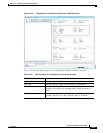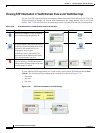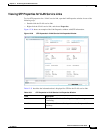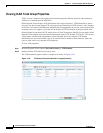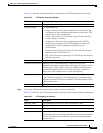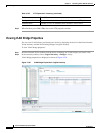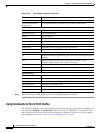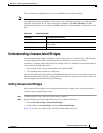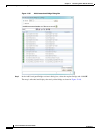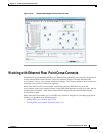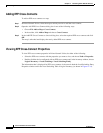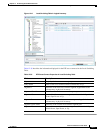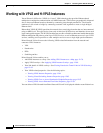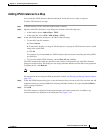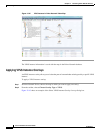
12-73
Cisco Prime Network 4.0 User Guide
OL-29343-01
Chapter 12 Monitoring Carrier Ethernet Services
Understanding Unassociated Bridges
These commands are applicable only for Cisco ASR 5000 series network elements.
Note You might be prompted to enter your device access credentials while executing a command. Once you
have entered them, these credentials will be used for every subsequent execution of a command in the
same GUI client session. If you want to change the credentials, click Edit Credentials. The Edit
Credentials button will not be available for SNMP commands or if the command is scheduled for a later
time.
Understanding Unassociated Bridges
Some switching entities might not belong to a flow domain, such as a network VLAN, a VPLS instance,
or a network pseudowire. These switching entities are referred to as unassociated bridges.
In addition, a switching entity that belongs to a network VLAN is considered an unassociated bridge if
it meets both of the following criteria:
• The network VLAN contains a null Ethernet flow domain (EFD).
• The switching entity contains no switch ports.
Unassociated bridge switching entities can hold Ethernet flow points that serve as termination points on
different network VLANs. If these switching entities are added to a map with the relevant VLANs, the
links are displayed in the Prime Network Vision map.
Adding Unassociated Bridges
Prime Network Vision enables you to add unassociated bridges to maps and to view their properties.
To add an unassociated bridge to a map:
Step 1 In Prime Network Vision, select the required map or domain.
Step 2 Open the Add Unassociated Bridge dialog box in one of the following ways:
• Choose File Add to Map > Unassociated Bridge.
• In the toolbar, click Add to Map and choose Unassociated Bridge.
Figure 12-39 shows an example of the Add Unassociated Bridge dialog box.
Table 12-35 VLAN Commands
Command Inputs Required and Notes
Create VLAN VLAN ID, VLAN Context Name, Bind Interface Name, Status
Modify VLAN VLAN ID, Delete Bind Interface, Context Name, Bind Interface
Name, Status
Delete VLAN VLAN ID



